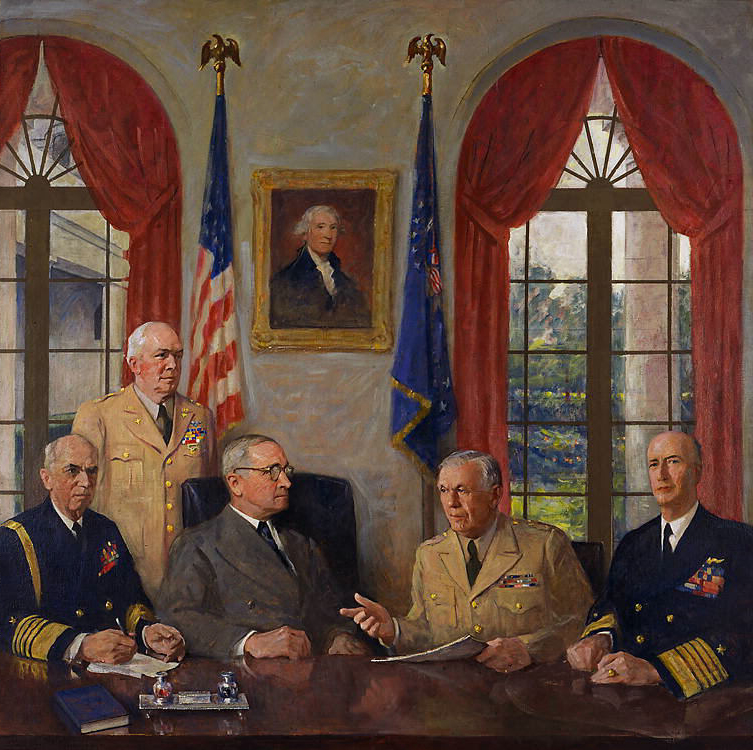The Arts and The Cold War

On March 12, 1947, President Harry S. Truman rolled out his policy of Cold War containment, in an address known today as the Truman Doctrine. Limited to countries under threat by Communism, the Truman Doctrine enabled military, economic, and political assistance. The policy was key to the early Cold War between the United States and Russia, as it specifically targeted Greece and Turkey as countries in which to forestall communism. It may be that the Truman Doctrine failed, as both countries subsequently were led by right-wing regimes in the years following his speech. Nevertheless, the Truman Doctrine is seen today as a declaration of the Cold War. Indeed, his speech outlined the goals of U.S. Cold War foreign policy, highlighting how the United States needed to provide military and economic assistance to protect nations from communist aggression.
Hand in hand with the Truman Doctrine was the Marshall Plan, which was signed into law on April 3, 1948. In a speech only three months after Truman’s address, George C. Marshall introduced the idea of economic support to Europe. Between 1948 and 1951, over $13 billion helped finance the economic recovery of Europe. One of the countries to receive the financial help was France. In 1948, the European Recovery and American Aid, which was the preliminary study for the Marshall Plan, cited France to be at risk of Communist takeover, describing the country, “…as the Communists well know, [as] the key to Western Europe. The issue is whether the French economy can be wrecked to the point where chaos and civil strife will permit the imposition of a Communist dictatorship or whether democracy can survive and be reinforced…”
The stakes were perceived to be very high as the French government included a substantial number of Communists. In 1945, parliament consisted of 586 seats, of which 365, or sixty-two percent, were held by the Parti Communiste Français (PCF). In fact, the greatest threat to the French Presiden Charles De Gaulle was the PCF, whose membership across France stood at half a million people, the largest French left-wing party in a number of national elections.
In planning foreign policy, American diplomats sought to create symbols of freedom and democracy that would help remind European citizens of the redemptive power of democracy. George F. Kennan, the Foreign Service Officer who developed the policy of containment, was informed by his colleagues that the “symbols of nationalism in France and Italy and in Germany are essentially bankrupt and in danger of being captured by reactionary and neo-fascist political elements which we do not wish to support…”
The Department of State launched several cultural initiatives, including the major art exhibition Advancing American Art (1946). This show was meant to tour Eastern Europe, the Caribbean and Latin America – and in October of 1946 it was split into two touring groups. The Eastern Hemisphere exhibition traveled from New York to Paris, and then to Prague, Czechoslovakia. The other section opened in Havana, Cuba in late 1946 and then traveled to Port-au-Prince, Haiti. Due to concerns about “un-Americanism,” however, the tour was stopped before the exhibition could show in Hungary, Poland, or Venezuela.
Can you think of any major American monuments or works of art in Europe or elsewhere that may speak to the fears and ideas of the early Cold War?